For all you food gardeners, start Super Charging Your Garden Today!
Garden Club: with full Step-by-Step gardening curriculum ! You get to look over my shoulder to see how to grow and process food throughout the year. Click image below for details.


There are two effective tools I use in the spring for annual bed prep.
One saves my back. The other turbo-charges my seedlings.
And here’s the link for more info on the Broad Fork I use.
Here’s the Link to get in on this spring’s Food Gardener’s Video Workshop!
This is the time of year people receive their seed catalogs. Many of the choices made here can lead to success or failure in a home food garden. This video will give you a quick overview on how to approach ordering seeds for your organic garden.
It’s the best time of year to sit back and start planning next year’s garden. So we’ve got a GREAT new gardening workshop series coming up. Keep an eye on your email for our new tutorials and a discount on the video training series we will release in the coming weeks!
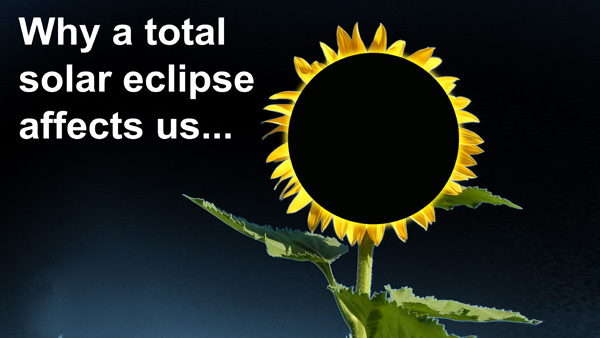
This year’s total solar eclipse got me interested in reading a few accounts of people over the generations who have experienced total eclipses first hand. Most are fun reads. The various descriptions of the observer’s experiences tend to touch on their involuntary emotional responses to watching the sun completely disappear during the day. A common personal reaction is that it can “provoke a flood of primal awe”
For me, that reaction represents the deeper truths that, once felt, cut deeply through our cultural, political outer shells and remind us that we’re all human beings on this planet orbiting around a star. Our shallow differences are moot. There is no them… only us. That realization can be unifying in ways that no amount of conversation or persuasion can match.
It’s interesting to think about how our species has spent millions of years relying solely on the annual photosynthetic energy budget from the sun, first hunting and gathering, then thousands of years using agriculture. That “fresh” sunlight that pulses growth around the planet each year was the only source of energy we knew…until we found fossil fuels (ancient sunlight) and feverously started extracting and burning it in as many ways as possible. Compared to the arc of human existence on this planet, the brief period of explosive growth, sometimes referred to as the fossil fuel “interlude” is an aberration from the old pattern. And one that is harvesting energy from a source too far down the “energy food chain.”
Our food production is so dependent on fossil fuels now that the amount of carbon used per comparative unit of food is a 10-1 ratio. Ten units of fossil fuels to create one unit of food that you can eat. The imbalance in that equation has consequences that we now see in everything from climate change, to synthetic chemicals in our food. We are now containing more of the solar energy in the biosphere than it can process and release, as it has for eons.
Luckily, food-growing techniques that align with natural systems, with no purchased inputs, are alive and well. We can feed ourselves without fossil fuels. But we need to change our general behavior first.
What we need is to re-connect with how this planet works, and mimic that. It’s in understanding those relationships where we find our path forward.
“The Major Problems in the World are the result of the difference between
how nature works and the way people think.”
-Gregory Bateson
I see this connection in my home gardens every year. The solar pulse and the food it generates, not to mention the processing of CO2, and a net sequestration of carbon back into the soil — the opposite of industrial ag.
You don’t need an eclipse to remind you how the planet works. But it does force you to pay attention. It reminds us we’re all alive in this moment and we all have a part to play.
The sense of awe and connection to greater natural systems is what drew me to create the project at GrowFoodWell.com in the first place. And continues to inspire me. I’m in awe each year when I see natural systems that respond to anyone that orchestrates the relationships of microorganisms in the soil through plants and how their dance is timed to track the sun’s movement across the sky.
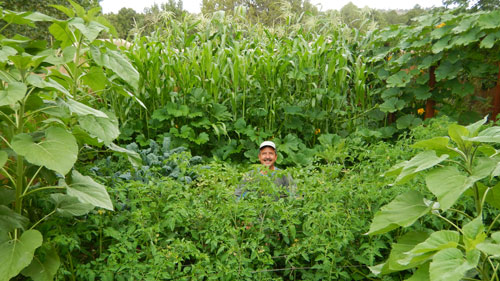
You just need to learn how to be a conductor in the symphony of plants to unlock that pattern.
No “them”. Only “us”
I hope you can relate because we’re all spinning through space together on the same boat.
Enjoy the ride.
Tom
Growfoodwell.com
*(watch the planet “breathe” with the solar calendar in NASA video below)
Earth Day
What that means to me has changed over time.
We all kind of make a collective nod to the planet once a year for all of its supporting services.
And then we return to business as usual.
But over the past few decades I’ve been immersed in projects in the realm of
environmental education, which has given me a deep understanding of the
scale of the challenges in opposition to our preference that “everything will be OK”.
For the past few years I’ve been much more involved in teaching people how to
grow food at home. It has forced me to distill the various layers in that process.
And a couple things stand out.
1) Our collective future is dependent on coming to grips with the fact that the eco-services the biosphere provides are critical for basic survival, and that those systems are under incredible stress right now.
2) The more we align with how natural systems work, the better off we are in this journey.
3) When it comes to healthier food production, water conservation, reduction of CO2 in the atmosphere, and a host of important goals, healthy soil is the baseline necessity to get there.
Soil, — dirt — the ground — Earth.
For all the great accomplishments of humankind,
we owe it all to 6 inches of topsoil and the fact that it rains.
There is a universe of microorganisms in the soil, much like in our bodies, that science is still just beginning to understand. But we know that the more we support the conditions that allow it to thrive, the better things grow in it. A big part of the future of humans will be involve the regenerative quality of soil.
Growing food on a personal scale is one of the oldest of human habits. We’ve done it for over 10,000 years.
Now, more than ever, we can re-connect with the patterns of the natural world by nurturing our patches of soil at home. Even though that in itself will not change everything, it is a personally accessible action that has meaning and leads to a healthier individual, and collectively, healthier communities.
I have interwoven the pattern of food production into my life for the past 16 years. I’ve become respectful of what’s required of me to align with the annual cycles of growing in rich living soil. It has made me appreciate how the small microcosm of a food garden done well models the same answers we are all seeking in the wider arena.
When we align with the systems that have been here for billions of years, we are all better off.
Happy Earth Day.
Dirt First!
Tom Bartels
GrowFoodWell.com
P.S.
I’m just finishing the new workshop on organic compost. It should be ready next week at some point. I’ll send you a note when i get it uploaded.
Cheers
Well, it’s that time of year again. The snow is gone, the weeds aren’t here yet, but the seed orders came through and now it’s time to get the soil blocks going. If you have never tried soil blocks, there are several reasons why you should.
So lets look at a bit of the process:
First I get my seedling trays cleaned and ready (I have re-used most of these for several years
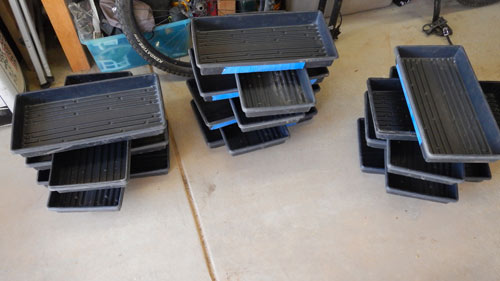 Then I mix the magic recipe (linked below this post)
Then I mix the magic recipe (linked below this post)
Then I get the 12-block “Soil Blocker” out and get ready to rock.
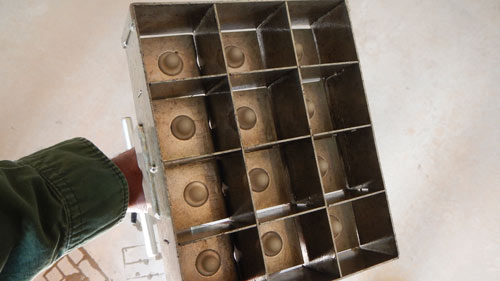 The biggest mistake on the consistency of the soil mix is to have it too dry. So be sure to keep it tacky. Try some experimentation to see how much the blocks compress before doing final ones. The soil mix should be piled about twice the depth of the actual blocks to it compresses as you push it down, then when you release them into the trays they will have the stability you need.
The biggest mistake on the consistency of the soil mix is to have it too dry. So be sure to keep it tacky. Try some experimentation to see how much the blocks compress before doing final ones. The soil mix should be piled about twice the depth of the actual blocks to it compresses as you push it down, then when you release them into the trays they will have the stability you need.
The recipe below makes about 400 blocks. Since I live in Colorado, and our season is about 110 days or so, I need to use these to get a head start on warm season veggies that will endure transplanting later on, especially tomatoes!
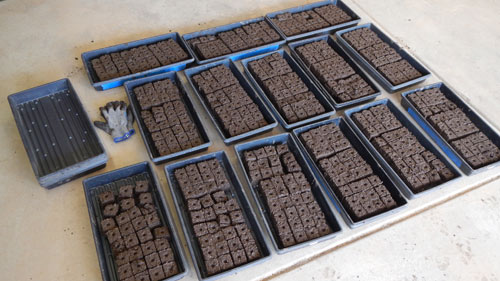 Seeds get planted in each center hole in the blocks. Then during watering this spring you just fill the base of the tray with about a quarter inch of water and the blocks absorb it. The roots will grow to the edge of each block and stop when they hit the oxygen space between them, thereby reducing root binding that is so often the case in cel trays. Once planted, the roots grow right through the block perimeter into the surrounding soil. This accelerates their growth cycle once planted out in the garden.
Seeds get planted in each center hole in the blocks. Then during watering this spring you just fill the base of the tray with about a quarter inch of water and the blocks absorb it. The roots will grow to the edge of each block and stop when they hit the oxygen space between them, thereby reducing root binding that is so often the case in cel trays. Once planted, the roots grow right through the block perimeter into the surrounding soil. This accelerates their growth cycle once planted out in the garden.
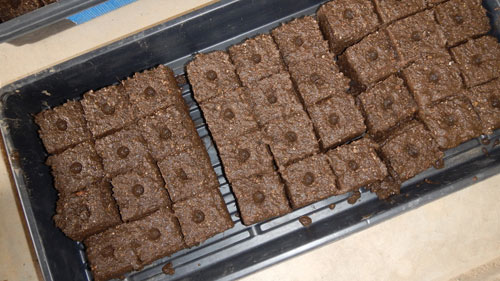
Once the seeds are planted, I cover the hole with some perlite which locks the smaller seeds in place.
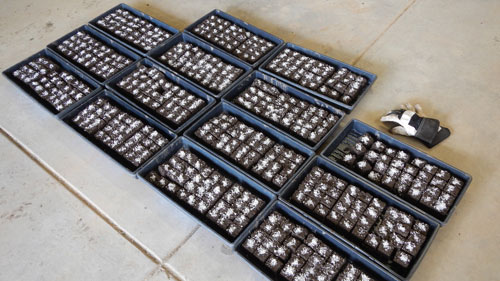
Then they all go inside for germination on the warm tile floor. This can take up to five days depending on the varieties. I cover them with plastic to hold the moisture.
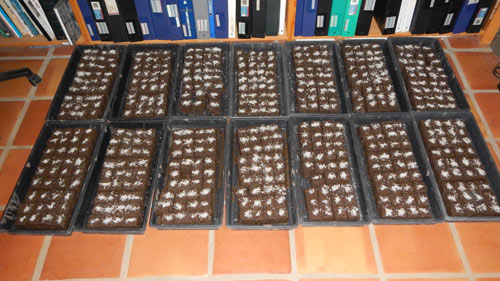 Once most of them germinate they will go into the garage under the timed lights for about 4-6 weeks. By then things will be ready to plant outside.
Once most of them germinate they will go into the garage under the timed lights for about 4-6 weeks. By then things will be ready to plant outside.
Soil Block mix:
(Makes roughly 400 blocks and you can get 36 to a standard tray.)
Mix in wheelbarrow: (Use 5 gal. buckets)
1.5 (5 gal) buckets sifted peat moss / screened through ½ inch hardware cloth
1 (5 gal) bucket course perlite
½ bucket sifted garden soil (screened through ½ inch)
1 (5 gal) bucket sifted (plant based) compost (screened through ½ inch)
1/2 cup lime. Mix
3 cups base Fertilizer (see below) Mix
~1-1.5 bucket water: This mix will be pretty wet when finished right. Biggest mistake is to make blocks too dry.
Organic base fertilizer mix:
(equal parts) roughly one cup each for this batch.
Greensand (for potassium and micronutrients)
Phosphate rock (for phosphorus)
Cottonseed meal or alfalfa meal (for nitrogen)
(Sifted is best on all three)
Use yogurt container as main unit to mix equal parts of above three.
Maybe start with 1/3 container of each ingredient and mix.
(then portion out the 3 cups for above mix)
* When pressing soil, pile needs to be twice the height of the press
* Dip block presser into bucket of water each time to ease the release
* Put tray liner in bottom to help with ease of getting out later
* Move blocks with pallet knife or spatula
* When you plant seed in blocks, put seed in depression and cover hole with Perlite.
Cover trays with plastic after planting seeds to hold moisture. Allow oxygen from below or side. Will sprout in about 5 days
Later when sprouted, pull plastic off and water daily.
Here are links to Soil Blockers. I use the 12 block version but they are made in all kinds of sizes.
**If you are looking for more guidance on all kinds of Organic Gardening Methods, check out Garden Club for a great way to learn!

Growing seeds indoors is truly quick and easy once you get the hang of it. One thing you want to keep in mind first is timing. You don’t want to start seedlings too early and have to keep them indoors too long as the ground in your garden is still thawing out. So do a bit of calendar planning to find the freeze dates and general planting calendar in your area to back time your seedling planting dates. You can make your own or purchase ready-made seedling mix. The medium you will grow your seedlings in should have the following attributes for successful propagation of seedlings.
-Good Drainage
-Non-crusting surface, so the small seedlings can push up through the surface.
-Neutral pH (7.0) this refers to the alkalinity of the soil.
-50% air space in the soil medium
-Low salt levels (no fertilizer)
Luckily you can usually go out and buy a bag of good sterile seedling mix and a few seedling trays to get you started. But you want to make sure it has good drainage.
Good drainage: Seeds need moisture in the soil but not standing water. They actually do better in soil that is 50% air space, well drained but with 100% humidity. That humid space between soil particles that is drained of static water is perfect for root growth. The mixture you use to start seedlings is different than soil or potting mix. The seedling mix is a lighter medium that helps give seeds their best chance of getting through the tricky period between seed and seedling. Some of the diseases that hit seedlings are brought on by
Too much standing water, and heat
Not enough air circulation
Both can lead to damping off or other maladies that will create poor germination and growth.
Most of that can be avoided by making sure not to overwater and by keeping enough air circulation around the young plants. Some people use a small fan.
Available products for seedling mix:
Peat-based products:
You may have heard that Peat is a good product for starting seeds. It is becoming less so. Peat is a limited resource that takes a large amount of fossil fuels to produce and ship from Canada and is becoming a lesser tool in organic gardening, although it is still commonly used because of its beneficial attributes for young plants. Make your own choice here.
Coir-based products: (pronounced “core”)
Coir is a renewable product that comes from coconut fiber, is a neutral pH and has properties much like peat without the environmental footprint.
Coir comes in brick form and can be put in a wheelbarrow and soaked in water for about 15 minutes, which makes it expand to its usable state, which is about five to seven times in volume.
You can use 50% coir (or peat moss) and 50% perlite for a sterile seedling mix base.
Perlite: Aside from having a light and absorptive medium to start with, drainage is key. That is why most seedling soil mixes have a product called Perlite added to it. The pearlite is a mined product that looks like miniature popcorn. You can buy it in bags at most garden centers and is an organic product. If you make your own seedling mix, you should make it about 50% pearlite. (Pearlite is ideal for use in seedling mixes but not so good for in the garden beds since it tends to migrate to the surface and blow away eventually.)
Vermiculite:
Vermiculite tends to absorb too much water to be useful in a seedling mix. It also has the tendency to hold onto and lockup potassium over time.
I then add an equal part sifted (plant based) compost to the mix to provide slow release micro nutrients and nitrogen for the plants. You don’t want any manure in the compost since the high salts will risk burning the roots on your seedlings. Some people go with a sterile mix here because of the risk of pathogens from the compost hindering the seedling growth, but if you use plant-based compost and there is enough air circulation and the plants are not overwatered, most of the risk is avoided. If you take the sterile route you will need some organic liquid fertilizer once the second set of true leaves have appeared.
Once you have your seedling soil mix you will need some sort of trays to start them in. Many people use the standard black plastic seedling trays with 50 or 72 cells in them because they are so readily available and work pretty darn well. They have round cells or square and you can buy them new for a nominal price or you can re-use old ones that you can sometimes get free from nurseries.
*Note that anytime you use trays that are recycled you will want to first make sure to soak the cleaned trays in a 5% bleach solution to kill any remaining pathogens that are waiting there to harm your precious seedlings. Once this is done, and they are rinsed well, any trays are perfectly fine to use over and over. It’s the best way to keep them out of the landfills. Pre-wet your seedling mix with water so it is like a wet sponge but not dripping. Then fill the trays with the mix all the way to the top of the trays.
There are other types of containers that people use to start seedlings. Everything from tubed newspaper cups, peat containers, egg cartons and even eggshells themselves. Some of the biodegradable containers like peat pots are nice for plants that don’t like to be handled for transplanting like cucumbers and squash. Seedlings in these types of containers can be planted directly in their fiber pots when ready.
Germination rate.
Each packet of quality seeds will have a germination rate on the package. If it is 90% this means that 90% of the seeds you plant will germinate if planted correctly. You will use this to estimate how many seeds to start based on your allotted growing space in the final garden bed. If the seeds of a particular variety have a lower germination rate, like 50% you will want to plant twice as many as you expect to have in the final run since only 50% will germinate. But if the rate is high in the 90+% you can trust that you will have close to the number you plant come to full germination. Only buy the amount of seed you plan to use during a two to three year period at the most. The fresher the seed, the better the germination rate.
Seed depth
Once you fill the trays with your seedling mix, the magic begins. Each seed type has a different depth requirement and it is good to look at the seed packet suggestions to find out what they are. Certain seeds like to germinate right on the surface, like and others, just below the surface.
Seed spacing.
If your seeds have a good germination rate, there is no need to put more than two or three of them per cell. Otherwise you will create more work in the thinning out process later on if multiple seedlings are crowded into a single cell. This can restrict airflow and create conditions for damping off or other damage from pathogens. Give your young seedlings plenty of breathing room in each cell once they come up. You can cut off the stems of competing seedlings inside a cell with scissors to thin them out. That way you don’t have to disturb any delicate root growth. You want to do this before the second real leaves reveal themselves.
Soil Temperature:
The optimal soil temperature for germination of most warm season crops is around 70 degrees at 100% humidity. Cool season crops can germinate best at around 50 degrees. So for germinating and growing seedlings, it is best to seek out a place with consistent warmth if possible. Electric tray heaters are commercially available if you want to go that route. They are thin pads that are placed under the trays and are thermostatically controlled to keep consistent warmth. If you are using a windowsill, make sure its not one that gets too cold at night. Close any insulating shades or drapes to keep the soil from getting too cold at night. Avoid using windowsills that get too hot during midday.
Humidity
100% is the ultimate goal but no standing water in the trays. This can be accomplished by spraying the mixture with water and putting a clear plastic dome cover on the tray or covering it with a sheet of plastic wrap until the seeds germinate. As long as the plastic has a pretty good cover on the tray and it traps the moisture, you shouldn’t have to water it again until the seedlings come up. Check each day to make sure it is still moist. Re-apply water spray when necessary.
SPEED:
Once you sow seeds you want them to germinate as fast as possible (which is why heated germination trays and lights help) If they don’t germinate, they can sit too long in soil both in trays or in direct seed situations in the garden, and are more susceptible to pathogens or rotting. When the seedlings start growing above the soil in the trays, remove any flat plastic. Domes can stay on as long as they don’t interfere with growing seedlings. If you are using a windowsill, make sure to turn the trays each day so the plants don’t lean to sun.
Light:
If you are using a light source, you want to bring it down as close the plant surface as possible and raise it as the seedlings grow. This is to avoid the seedlings from getting too leggy by reaching for the light. This is also a risk that is created when you plant seedlings too early and can’t transplant them outside for long periods of time. The seedling will spend too much time in the trays and get leggy and weak. So there is little advantage to planting seedlings earlier than necessary for your climatic zone.
“Damping off” can be combated by increasing air flow (putting a small fan on low near the seedling tray) and watering in the morning so the soil has time to dry off before nightfall. Most pathogens work at night and if the soil is wet, you are helping them do their dirty work. Also when watering seedling trays, don’t flood them since this can help spread any disease caused by pathogens in the soil.
“Hardening off”
As the seeds outgrow their cells, they can be transplanted into larger pots depending on the needs of each vegetable. Before they are moved into the garden and transplanted they need a period of “hardening off” where they get used to different temperature swings and direct sunlight outdoors. Start by putting them in the shade during the warmth of the day for a few hours. Increase the exposure time to sunlight each day as long as they don’t show signs of stress. If they wilt from their first few times of sun exposure, they usually recover if watered and brought back inside for the night. This process can take up to two weeks depending on the plants. If threat of frost has passed by then, the plants should be ready to be planted into the garden.
TIP: Don’t feed seedlings in trays any fertilizer until after second set of real leaves grow. The roots can burn easily. Seedlings get most of their nutrients from the seed during the germination process.